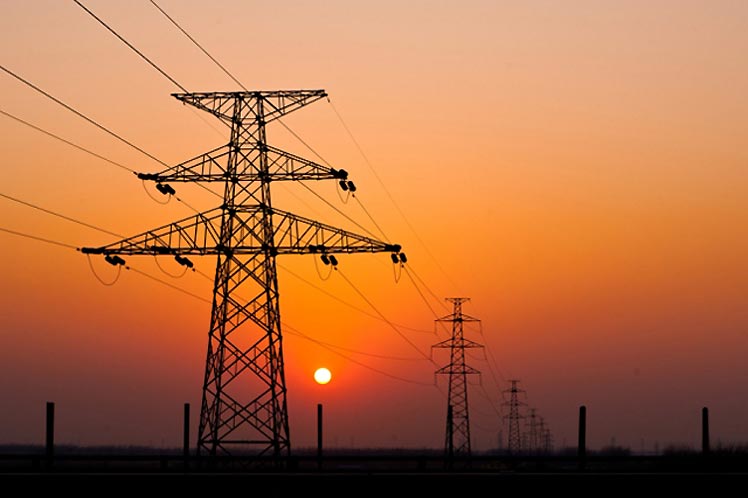Energy indicators show progress in Latin America and the Caribbean, but the region continues without achieving a structural change in its production matrices, while the use of natural resources grows with insufficient contributions to sustainable development.
Data from the Latin American Energy Organisation (Olade) support the relative progress that contributes to the decarbonisation of economies and compliance with the climate commitments of the Paris Agreement, signed in 2015.
According to the organisation, the share of renewable energies in regional electricity generation rose from 53 per cent in 2015 to 65 per cent in 2022, and in total supply, the share rose from 24 to 28 percentage points, following the same comparison.
At the same time, total electricity coverage advanced from 96.5 per cent in 2015 to 97.5 per cent in 2022 and total carbon dioxide (CO2) emissions from the energy sector fell from 1.993 billion tonnes to 1.849 billion tonnes, Olade said in its report.
So far, the energy transition process in the region has focused on the electricity generation matrix, a laudable effort, but insufficient to meet the challenges of sustainable development in socio-economic and environmental terms.
According to Olade’s calculations, electricity currently represents around 20 per cent of final energy consumption in the region, and more than 60 per cent of this consumption corresponds to fossil fuel sources, although there are notable differences between countries.
The above percentages help to understand the need for greater efforts to reduce greenhouse gas emissions, mainly CO2, in the final consumption sectors, especially in the most energy-intensive ones, such as transport and industry.
According to the analysis, electricity from renewable sources, modern biomass and natural gas have so far been the transitional sources available to reduce carbon emissions in the end-use spheres.
However, there are segments where clean sources have difficulties to penetrate, namely air, maritime and heavy-duty road transport and industries such as cement and steel, the diagnosis corroborated.
Some countries are looking at the possibility of introducing new clean carriers, including green hydrogen and ammonia and synthetic fuels, to address the problem, Olade executive secretary Andrés Rebolledo said in the most recent edition of the Energy Outlook for Latin America and the Caribbean.
According to ECLAC, this part of the world is home to almost 20 percent of the world’s oil reserves, at least 25 percent of some of the world’s strategic metals and more than 30 percent of the world’s primary forests and freshwater.
Meanwhile, natural resource-based economic activities account for only 12 per cent of value added, 16 percentage points of employment and half of the area’s exports, the Economic Commission for Latin America and the Caribbean (ECLAC) said.
Alongside the proven and potential benefits, the impacts on the environment and social inequalities are growing, underscoring the need for a structural change in the production and energy matrices, the UN agency reiterated.
The «Panorama of natural resources in Latin America and the Caribbean», published by ECLAC in April 2024, values the role of these assets, both renewable and non-renewable, in economic development and calls for progress towards a development model that incorporates the principles of sustainability and equity.
In an energy transition scenario, changes should be adapted to the needs and capacities of countries so that the benefits and costs of the process are distributed in accordance with the principle of equity between households and economic sectors.
The fair dimension of the energy transition should take into account an unavoidable imperative: the protection of people’s jobs, incomes and businesses and their energy supply, which points to the importance of simultaneously and comprehensively promoting diversification in the energy and productive spheres in general, the diagnosis argued.
In this sense, ECLAC recommended that States plan the strategy for the gradual abandonment of fossil fuels, which may differ according to the needs, capacities and specific contexts of each nation, taking into account, in particular, whether or not it is a hydrocarbon-producing country and how developed its oil and natural gas industry is.
Moreover, he added, fossil fuels fulfil functions that renewable and clean energies cannot currently assume in electricity generation, such as in industrial applications for the production of steel, cement and chemicals.
Nor would it be fair to demand that the nations of the Global South with oil and gas reserves renounce the use of these resources, which have supported and continue to support the progress of the world’s great economic powers.
The more sustainable use of fossil fuels is a necessary complement to the options for achieving a just energy transition; the penetration of renewable and clean energy and improved energy efficiency, ECLAC weighed, are not the only factors that can contribute to global agendas.
Consequently, it said, the transformation, in addition to being gradual, must be pragmatic, so that the least developed countries make feasible commitments to achieve their sustainable development and contribute to the fight against climate change.
Investments should be in both more sustainable fossil fuels (with sequestration and emissions management) and low-carbon energy, and should be programmed together with the strategy of moving away from fossil fuels, the UN entity proposed.
To this end, Latin American and Caribbean nations require foreign direct investment, as well as the transfer of knowledge and technologies, which could also favour the creation of capacities to diversify the productive structure.
In the opinion of the Inter-American Development Bank (IDB), the area is among the leaders in the international energy transition process, due to the capacities installed in hydroelectric, solar and wind power plants.
However, to achieve the goal of zero net emissions by 2050, it is necessary to accelerate the pace of investment in electro-mobility, electricity transmission networks, green hydrogen, storage technologies and energy integration, a challenge that governments cannot face alone, according to the IDB.
Although progress has been made, the most recent ECLAC forecasts for 2024 suggest that the region’s gross domestic product (GDP) could expand by an average of just 2.1 per cent this year.
The forecast does not express a merely conjunctural problem; the region continues to be mired in a development crisis, characterised by three mutually reinforcing traps: the trap of low economic growth, that inherent to high inequality and low social mobility, and that associated with low institutional capacity and ineffective governance, reiterated the United Nations entity.




